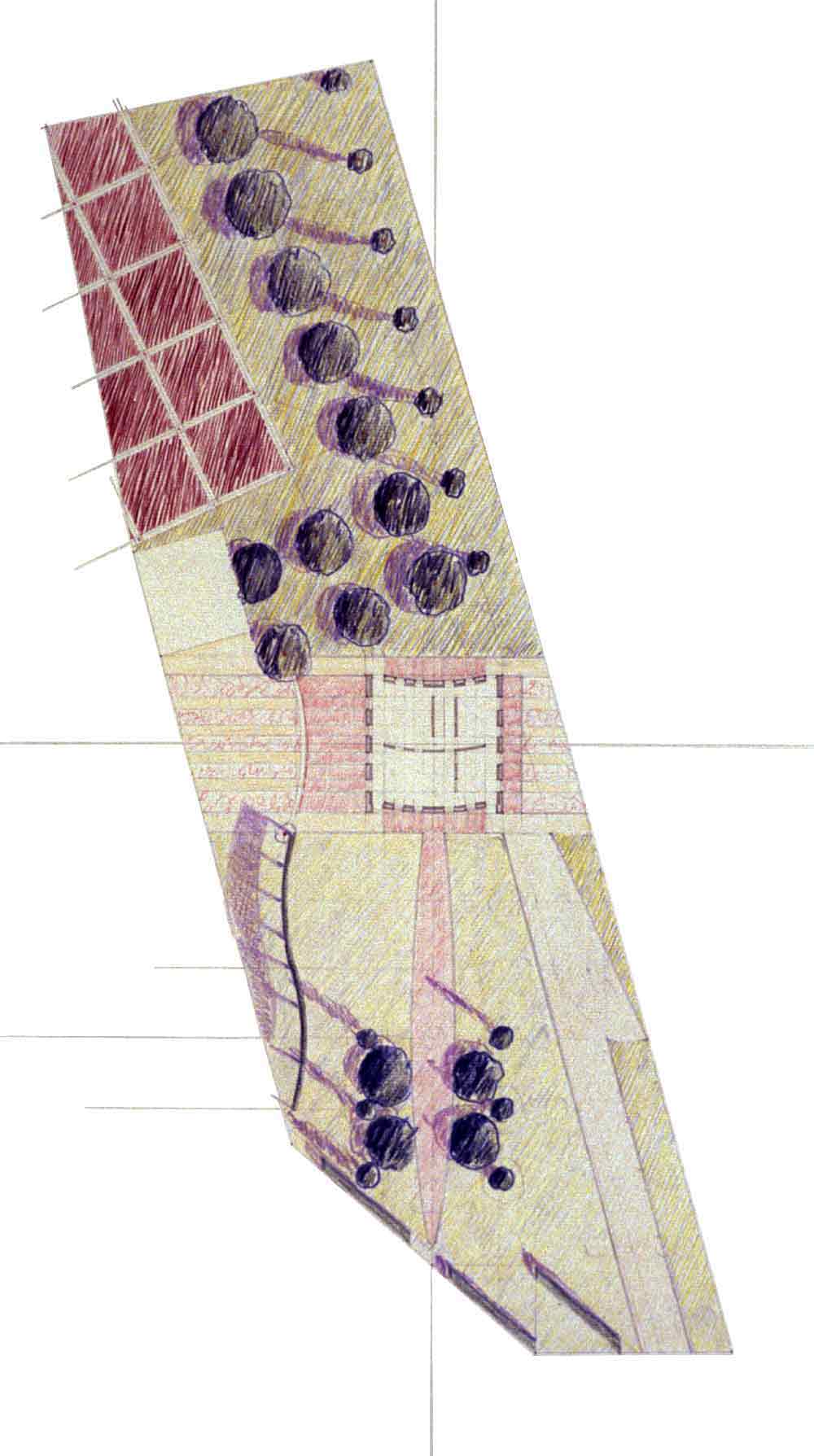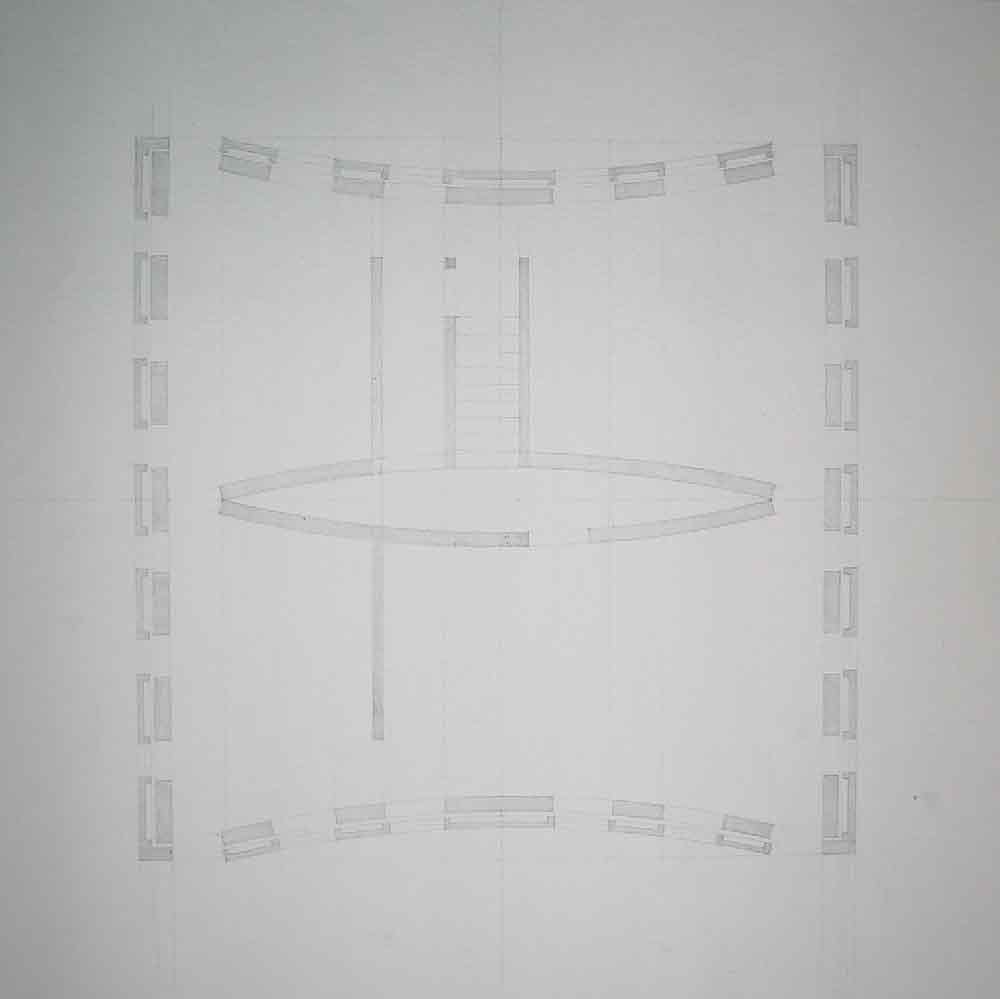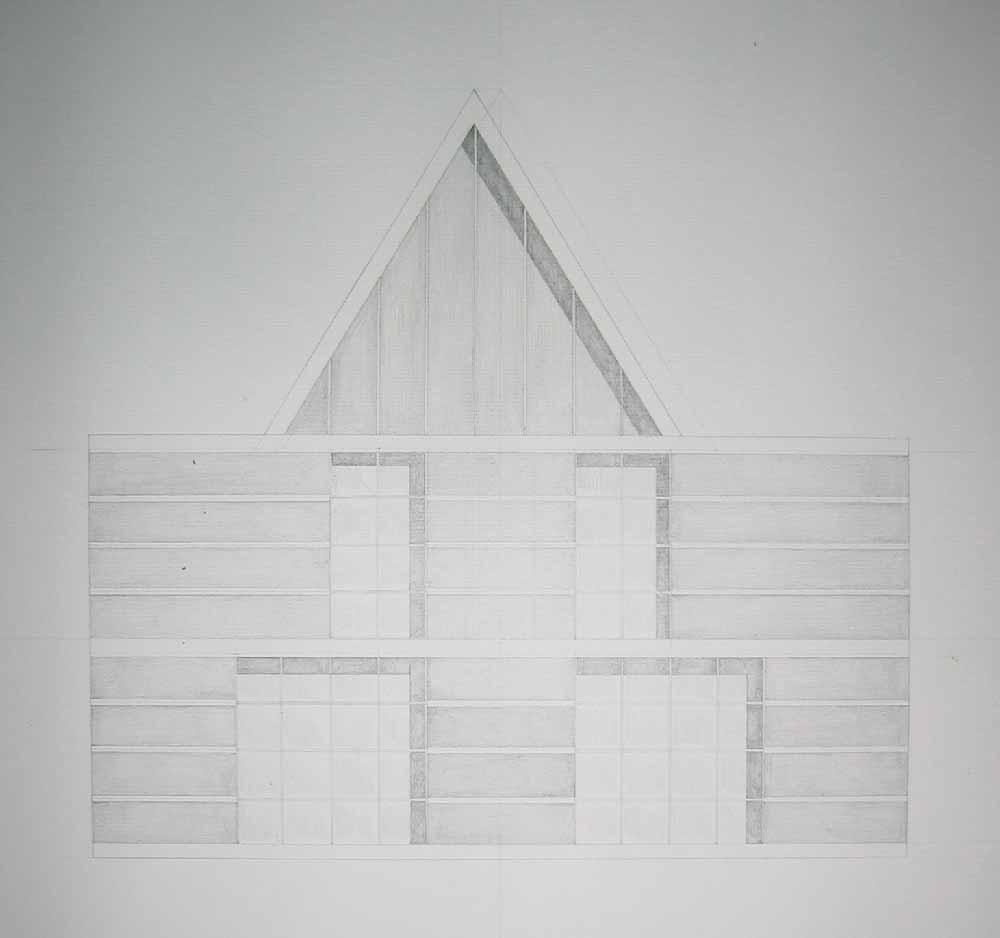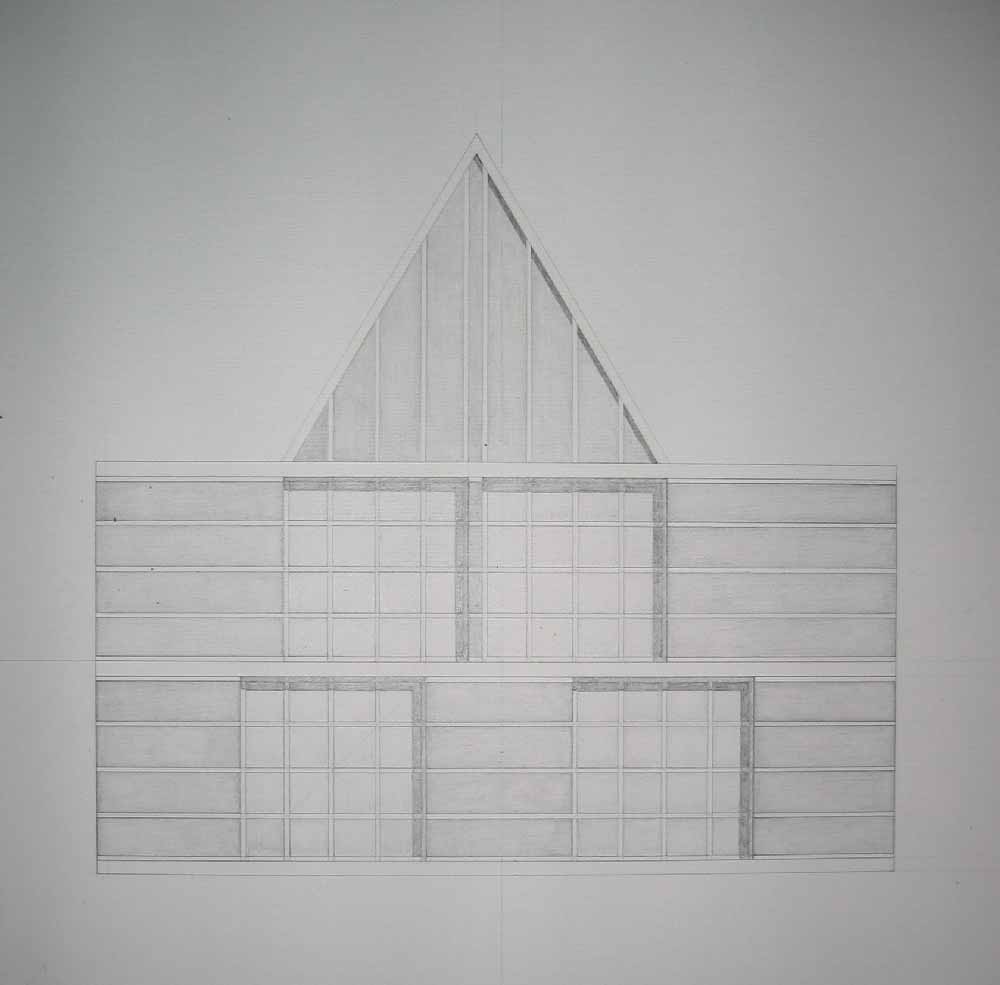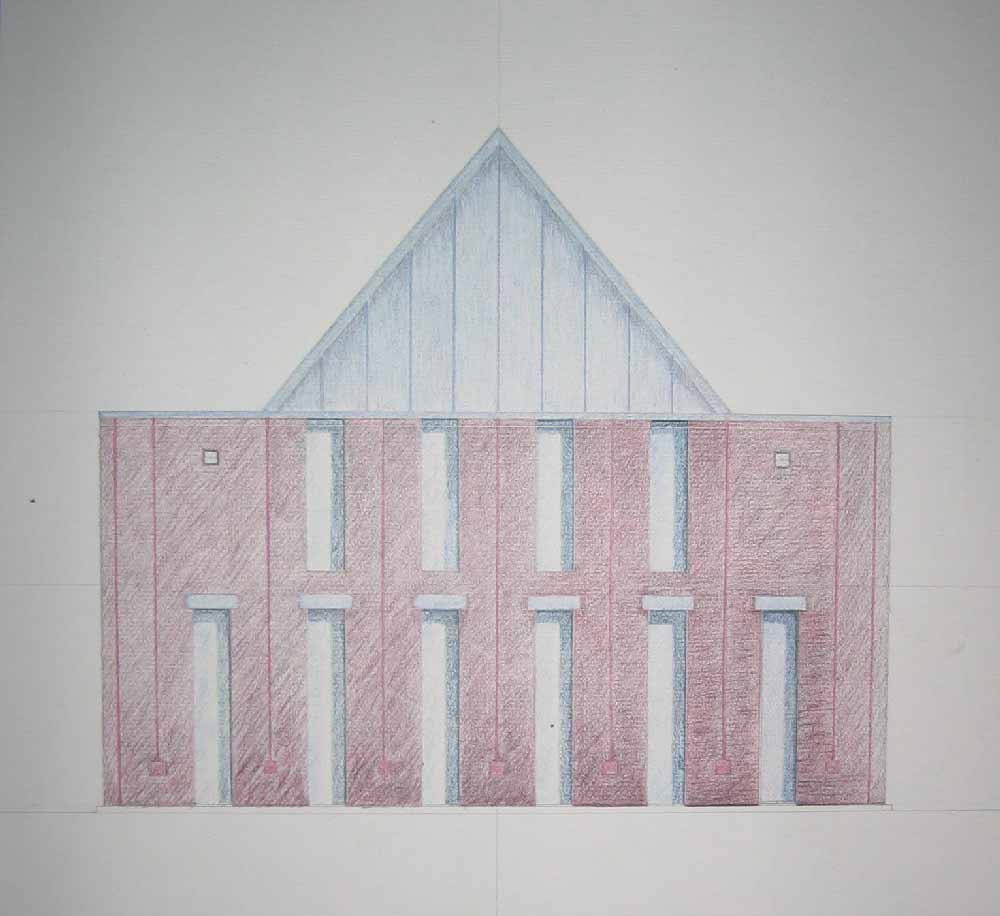1990 Lovendegem
A (very) small house.....
Two proposals.
The second one is better.
What do we see?
Very few ‘things’ ....
- For the building... :
In a square outline,
the questioning or the doubt over the square....
Or perhaps even its negation.
An in-between two straight edges
where the circulation of a rhythm of curves begins....
Nothing more.
It is impossible to see a functional hierarchy here.
- For the garden ... :
A bit of straightness...
But above all, the oblique....
*
It is impossible to see in the design of the project
the imaginative emergence
of something existing or pre-existing...
It is impossible to see in the drawing of this project
the contribution,
coming as a copy from the outside,
of a figure from a historical architectural object...
It is therefore impossible to see in it
the com-position of figures...
One can only see
the institution of a geometry...
That is to say
of the ‘One’, here unfinished...
of the other...
and of the articulated in-between
from one to the other...
All this in an inaugural mode....
by the simple dis-position of 'matter'.
‘Matter' of which the Greeks,
by the word 'phusis',
said that it was 'that which makes possible'.
All this, then
without ever reaching the notion of object...
so much the play of the in-between
is authoritative in this project.
This project therefore says that
the elements or instruments of architecture
are simply non-significative matters
dis-posed at dis-stance.
It is therefore thought here that
it is the ‘dis-stances’ that make the architecture.
And dis-stances is even a better word than dis-position.
For it contains the word for poetry: 'stanzas'.
‘Stanzas' that are not significant
but are there,
necessarily before all else,
to welcome the new sense, at its inauguration.
It is therefore that
this inaugural dis-stance between matters,
which we might call 'space',
that is 'what makes possible' anthropic life at its inauguration
by simply saying,
that to get out of the Real,
where the Impossible reigns,
one needs a few
of ‘law’
but above all
one needs
the oblique and of the curve
that is to say,
a way
of not going straight
and only doing with what already exists
but to go towards the other
directly in an oblique
or at any time in a curve....
That this is necessary
to be able to live in Reality
a ‘contract with the Real’
called in Greek sym-bolein ...
That is to say, to establish a worthy symbolic life
outside or at dis-stance of the Real.
In this project, space is connoted with this without more.
It is simply based here
a ‘locus’ of curve and oblique.
A ‘locus’
and not a site, a position, a place, ....
but an active dis-position
through the stance
of the specific in-between
described above
and instituted,
at dis-stance of the Real,
underpinning a Sensibility,
and thus carrying the possibility of Sense
namely the Symbolic...
*
This is what the client did not want
....because it was about architecture.
He built
instead of this project
a building
which can be seen as a
a paradigm of inconsistency.
This is to be thought of ....
Few people want the consistency of architecture...
It is not even clear that our society wants it...
unless it consists of its negation
i.e. it must be an 'object' or 'image'.




